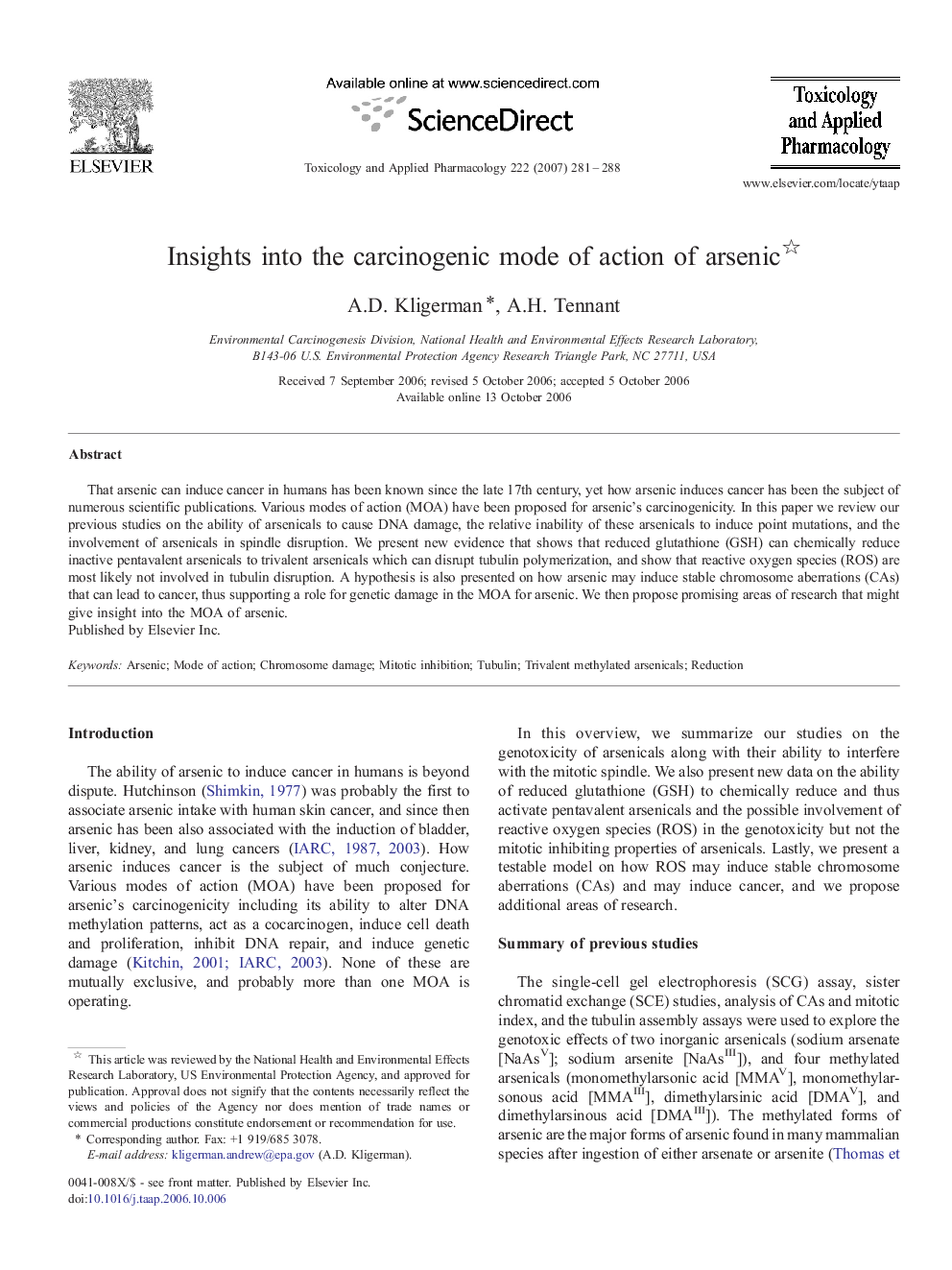| Article ID | Journal | Published Year | Pages | File Type |
|---|---|---|---|---|
| 2571151 | Toxicology and Applied Pharmacology | 2007 | 8 Pages |
That arsenic can induce cancer in humans has been known since the late 17th century, yet how arsenic induces cancer has been the subject of numerous scientific publications. Various modes of action (MOA) have been proposed for arsenic's carcinogenicity. In this paper we review our previous studies on the ability of arsenicals to cause DNA damage, the relative inability of these arsenicals to induce point mutations, and the involvement of arsenicals in spindle disruption. We present new evidence that shows that reduced glutathione (GSH) can chemically reduce inactive pentavalent arsenicals to trivalent arsenicals which can disrupt tubulin polymerization, and show that reactive oxygen species (ROS) are most likely not involved in tubulin disruption. A hypothesis is also presented on how arsenic may induce stable chromosome aberrations (CAs) that can lead to cancer, thus supporting a role for genetic damage in the MOA for arsenic. We then propose promising areas of research that might give insight into the MOA of arsenic.
